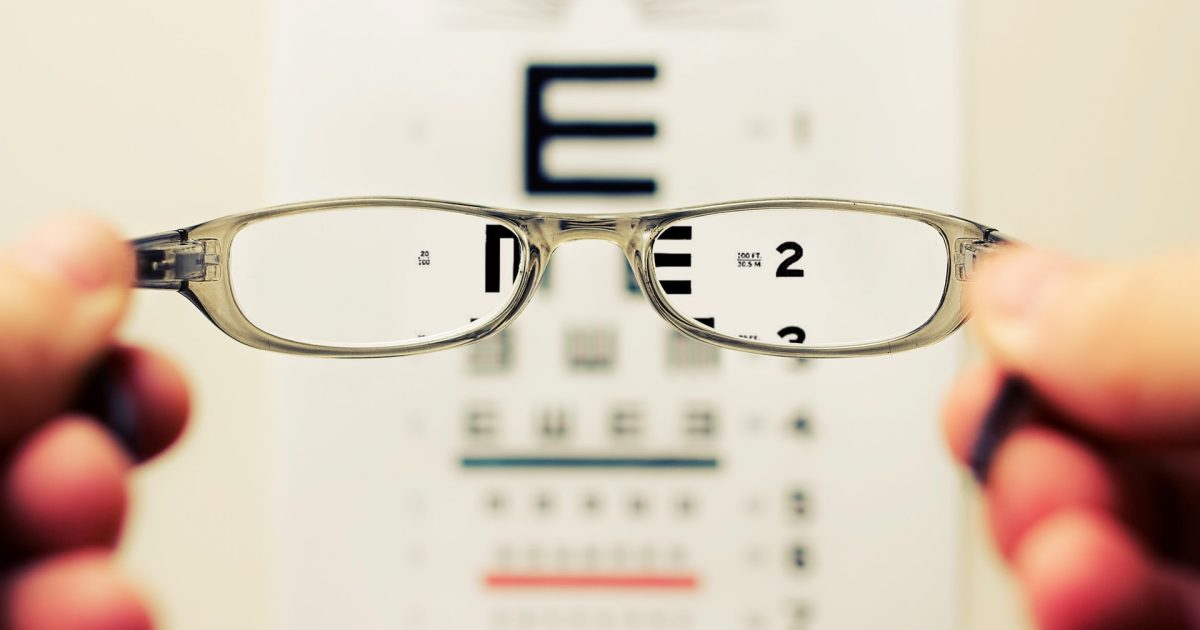Why 20 is the magic number for eye health
Article by Chew’s Optics Specialist. 3 March 2022

One of the most neglected aspects of personal fitness is eye health. Think about the resolutions you made at the start of the year. We bet you’ve thought more about drinking enough water and hitting the gym regularly, than taking care of your eyes.
A 2012 global survey by Bausch + Lomb confirms that most people may not look after their eye health, despite recognising the importance of doing so. In fact, only about 21% of responders said they had regular eye exams in the last five years, while about 44% believe there’s no need for an eye test if they’re not facing any problems.
Learning about all things eye health-related may feel a little daunting – especially for the uninitiated. A good way to start is to take small steps. Before diving into topics like AMD (age-related macular degeneration), glaucoma and cataracts, start by learning how to practise healthy eye habits. And as a beginner, all you need to remember is the number 20.
What exactly is 20/20 vision?
The term, 20/20 vision, gets thrown around a lot in conversations about eye health. You’ve probably heard of it, but do you know what it actually means? Contrary to popular belief, 20/20 does not mean perfect vision.
It refers to normal vision, measuring only the sharpness or clarity of vision at a specific distance. Other factors that contribute to your overall vision include eye coordination, colour vision, peripheral vision, ability to focus, depth perception and more.
If you have 20/20 vision, it means you’re able to see clearly from 20 feet (6m) away what should normally be seen at 20 feet. Likewise, having 20/100 vision means that you need to be 20 feet away to see what someone with normal vision can see at a longer distance of 100 feet.
If your eyesight is above average, you might have 20/10 vision – the ability to see from 20 feet away things that are normally visible from a distance of 10 feet.

How to test for 20/20 vision
Curious about your number? Just visit an optometrist such as Chew’s Optics and request for an eye chart test. Most people have done this at least once in their lives. Known as the Snellen chart, it features 11 rows of letters, where the size of the letters gradually decreases with each row. Without the use of glasses or contact lenses, your job is to identify each letter.
Don’t fret if you don’t do well. It’s not common for people to have normal vision. According to the University of Iowa Hospitals and Clinics, only 35% of adults have 20/20 vision (without the help of corrective surgery, spectacles or contact lenses). But it’s a worthy goal to work towards, a good first step in your eye health journey.
How to achieve 20/20 vision
1. Get your eyes checked.
You need to understand the current health of your eyes and identify the problems, before you can start fixing them. The best way to do this is by scheduling a consultation with an established optometrist in Singapore like Chew’s Optics. Get your eyes checked and get your prescription.
2. Wear your glasses or contacts, as advised.
Once you’ve gotten your prescription, follow your optometrist’s instructions and wear your spectacles or contact lenses, as needed. Not doing so may lead to eye strain, which may cause headaches and other side effects. You don’t want to force your eyes to work harder.
3. Go for annual eye exams.
To avoid any deterioration, make sure to schedule a comprehensive eye exam with your optometrist every year. Don’t wait until a problem surfaces. Your optometrist will help you to detect early symptoms and ensure your prescription is up-to-date.
4. Practise healthy habits.
Firstly, consuming green leafy vegetables, antioxidant foods and fish high in omega-3 fatty acids does wonders for your eyes. Second, doing cardio helps to fight high cholesterol and diabetes, which can be linked to certain eye diseases. Finally, you should take eye breaks with the 20/20/20 rule.

What is the 20/20/20 rule?
The magic formula for reducing eye strain, the 20/20/20 rule is about looking at an object 20 feet away for 20 seconds every 20 minutes. Essentially, the goal is to take frequent breaks and relax your eyes by focusing on something far away.
Often, our eyesight deteriorates when we spend extended periods of time doing close-up work. This may affect our ability to switch between focusing on far and near objects. The fact that working from home has led to increased screen time doesn’t help either.
The 20/20/20 rule makes it easy for you to remember to take breaks. Although you’re meant to do it every 20 minutes, the act of looking afar only lasts 20 seconds (the amount of time it takes for your eyes to relax). And if you can’t estimate 20 feet (6m), just look at a tree or building across the street.
Need more help with your eye health? Book an appointment with Chew’s Optics now, or swing by our optical shop at 144 Teck Whye Lane, #01-211. We’re open daily except for Mondays (and occasional special closures). For further enquiries, contact us at +65 8314 7093.
